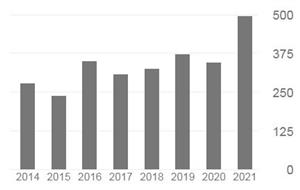Effect of Bismuth Oxide on White Mineral Trioxide Aggregate: Chemical Characterization and Physical Properties
Aim: To assess the effect of bismuth oxide (Bi2O3) on the chemical characterization and physical properties of White mineral trioxide aggregate (MTA) Angelus. Methodology Commercially available White MTA Angelus and White MTA Angelus without Bi2O3 provided by the manufacturer especially for this study were subjected to the following tests: Rietveld X-ray diffraction analysis (XRD), energy dispersive X-ray analysis (EDX), scanning electron microscopy (SEM), compressive strength, Vickers microhardness test and setting time. Chemical analysis data were reported descriptively, and physical properties were expressed as means and standard deviations. Data were analysed using Student’s t-test and Mann–Whitney U test (P = 0.05).
Results: Calcium silicate peaks were reduced in the diffractograms of both hydrated materials. Bismuth particles were found on the surface of White MTA Angelus, and a greater amount of particles characterized as calcium hydroxide was observed by visual examination on White MTA without Bi2O3. The material without Bi2O3 had the shortest final setting time (38.33 min, P = 0.002), the highest Vickers microhardness mean value (72.35 MPa, P = 0.000) and similar compressive strength results (P = 0.329) when compared with the commercially available White MTA Angelus containing Bi2O3.
Conclusion: The lack of Bi2O3 was associated with an increase in Vickers microhardness, a reduction in final setting time, absence of Bi2O3 peaks in diffractograms, as well as a large amount of calcium and a morphology characteristic of calcium hydroxide in EDX/SEM analysis.
Conclusion: The lack of Bi2O3 was associated with an increase in Vickers microhardness, a reduction in final setting time, absence of Bi2O3 peaks in diffractograms, as well as a large amount of calcium and a morphology characteristic of calcium hydroxide in EDX/SEM analysis.














